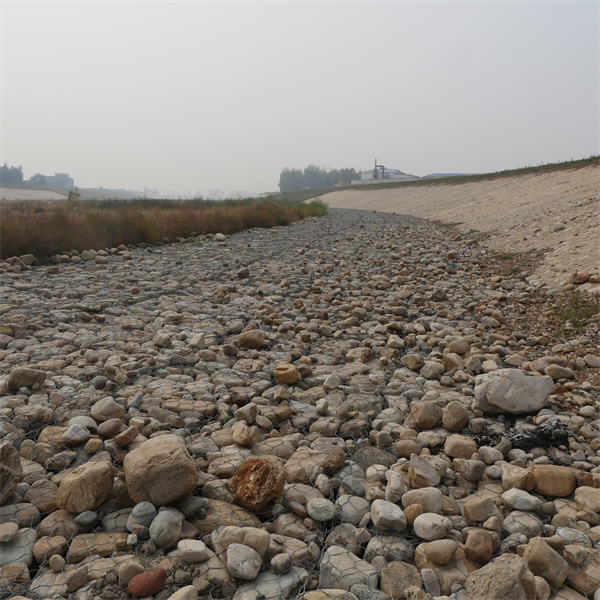Jul . 26, 2024 14:40 Back to list
Creative DIY Gabion Plant Stand Ideas for Garden Enthusiasts and Outdoor Decor Lovers
DIY Gabion Stand for Plants A Modern Touch to Your Garden
In recent years, gardening enthusiasts have increasingly adopted innovative designs to enhance their outdoor spaces. One such trend gaining popularity is the use of gabion stands for plants. Gabions, traditionally used in construction for erosion control and structural support, are now making their way into gardens and landscaping as unique and functional plant stands. Whether you're a seasoned gardener or a DIY novice, creating your own gabion stand for plants can be an exciting and rewarding project.
What is a Gabion?
A gabion is a cage or box filled with rocks, stones, or rubble, typically made from wire mesh. They can vary in size and are used for various purposes, including retaining walls, sound barriers, and decorative elements in landscaping. The rustic look of gabions complements a variety of gardening styles, making them an attractive option for plant stands.
Why Choose a Gabion Plant Stand?
1. Durability Gabions are highly durable and can withstand harsh weather conditions, making them an excellent choice for outdoor use. Unlike wooden plant stands that might rot or degrade over time, gabions can last for years with minimal maintenance.
2. Aesthetic Appeal The natural look of stones enclosed in wire enhances the visual appeal of your garden. Gabion stands can be tailored to fit your design preferences, whether you prefer a modern minimalist look or a more rugged aesthetic.
3. Versatility Gabion plant stands are incredibly versatile. They can be used to display a single large plant or multiple smaller ones, and they can be easily adapted for different types of plants, from succulents to herbs.
4. Environmental Benefits Using locally sourced stones reduces the carbon footprint associated with transporting materials. Gabions also allow for excellent drainage, which is vital for plant health.
How to Build a DIY Gabion Plant Stand
Creating your own gabion plant stand is a straightforward process that requires minimal tools and materials. Here’s a step-by-step guide
diy gabion stand for plants manufacturers

Materials Needed - Gabion wire mesh (you can purchase pre-made cages or create your own) - Rocks or stones (choose a variety that suits your style) - Wire cutters - Gloves for safety - Plants and soil
Instructions
1. Design Your Stand Decide on the size and shape of your gabion stand. Determine whether you want a single level or multiple tiers. Sketch your design to guide you during construction.
2. Prepare the Wire Mesh If you’re creating your own frame, cut the wire mesh to the desired dimensions. Ensure the edges are secure to avoid any sharp areas.
3. Fill the Gabion Begin filling the gabion with rocks. Start with larger stones at the bottom for stability, and use smaller ones to fill the gaps. This layering also adds visual interest.
4. Secure the Cage Once filled, secure the wire mesh using wire twist ties or additional wire, ensuring that the stones are tightly packed to maintain the structure.
5. Planting Depending on your design, create small openings in the mesh for planting. Fill the top with soil, and place your chosen plants in their respective spots.
6. Finishing Touches Consider adding decorative elements, such as mulch around the base or smaller plants in front, to enhance the display.
Maintenance Tips
To keep your gabion stand looking great, perform regular checks for any loose stones or rust. Water your plants according to their needs and enjoy the evolving beauty of your creation as different seasons bring new life.
In conclusion, a DIY gabion plant stand not only adds character to your gardening space but also promotes creativity and sustainability. With a few materials and some effort, you can build a functional piece that showcases your plants beautifully and stands up to the test of time. Happy gardening!
-
The Role of Galvanized Gabion Mesh in Riverbank Protection
NewsJun.26,2025
-
The Role of Gabion Basket Raised Bed in Sustainable Gardening
NewsJun.26,2025
-
Quality Assurance of Wire Mesh Gabion Baskets
NewsJun.26,2025
-
Installation Guide for Welded Gabion Box
NewsJun.26,2025
-
How to Choose the Right Gabion Box
NewsJun.26,2025
-
Different Types of Gabion Wire Mesh
NewsJun.26,2025
-
Why PVC Coated Gabion Mattress Is the Best Solution for Long-Term Erosion Control
NewsMay.23,2025






